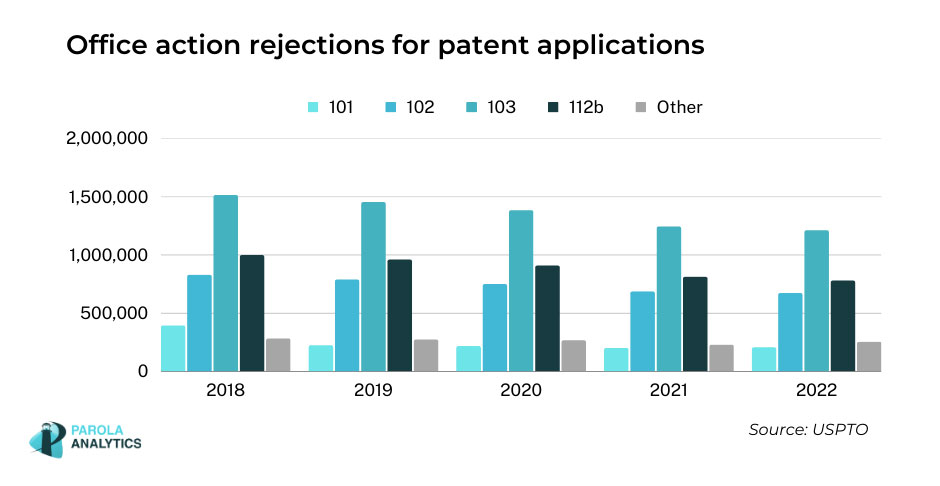In a rapidly evolving technology landscape, protecting intellectual property becomes more critical than ever.
Patents are a valuable tool for inventors and businesses to protect their innovations and maintain a competitive advantage. Patents allow an owner to “exclude others from making, using, offering for sale, or selling” an invention or “importing” it into a certain jurisdiction. If an entity infringes a patent, the owner has the right to pursue legal action.
However, securing a patent involves meeting a specific set of criteria and a rigorous examination process. In this guide, we’ll cover the various patentability requirements, and how a patentability search and opinion can provide valuable insights before filing a patent application.
A patentability search, also known as a novelty search seeks to determine if an invention meets the patentability criteria of novelty, and to some extent non-obviousness.
The primary goal of this search is to uncover any existing prior art that may affect the patentability of the invention.
Prior art refers to any publicly available information that existed before the filing date of the patent application. This includes previously patented inventions, published patent applications, scientific literature, technical papers, product manuals, and any other relevant disclosures.
In order to fully understand what a patentability search entails, it is important to examine the various criteria for patentability. In this guide, we’ll focus on the USPTO.
Conditions for patentability are summarized in 35 U.S.C. § 101:
“Whoever invents or discovers any new and useful process, machine, manufacture, or composition of matter, or any new and useful improvement thereof, may obtain a patent therefor, subject to the conditions and requirements of this title.”
However, the interpretation of this is generally expanded into four key conditions.
The invention should involve an inventive step that would not have been obvious to a person skilled in the relevant field. This just means that the invention must not be an obvious improvement or combination of existing knowledge or elements.
The USPTO uses an “ordinary person having ordinary skill in the art” standard to determine non-obviousness.
Does a combination of known elements make an invention obvious?
The USPTO notes that: “When considering obviousness of a combination of known elements, the operative question is thus “whether the improvement is more than the predictable use of prior art elements according to their established functions.”
Based on data from the USPTO, most patent rejections come from Section 103, which is the non-obviousness criteria.

There is also an “enablement requirement” in patents. 35 U.S.C. 112(a) states that: “The specification shall contain a written description of the invention, and of the manner and process of making and using it, in such full, clear, concise, and exact terms as to enable any person skilled in the art…”
In simpler terms, this means that the inventor or patent applicant must sufficiently describe the invention so that someone knowledgeable in the field can understand and replicate the invention based on the information provided. If the invention is vague or lacking in detail, the patent application may be rejected.
A Section 112 rejection (which figures in the graph above) is when a patent examiner assesses the claims to be “indefinite” or vague or ambiguous.
The invention must be new, meaning it has not been publicly disclosed in any form anywhere in the world before the filing date of the patent application. This includes any prior public disclosures, including those by the inventor. Rules relating to novelty are further described in Section 102.
Assessing novelty is a crucial step before filing a patent application, and is the main goal of a patentability search or a novelty search.
Yes. In the U.S., an inventor has to file a patent application within one year of the first public disclosure or offer for sale. In case an applicant is unable to fully prepare the patent application, an option is to file a provisional patent application which extends the deadline for another 12 months. Other jurisdictions may not offer the same grace period.
It is important to note that in the U.S., the America Invents Act (AIA) brought significant changes to the patent system, including a shift from the previous “first-to-invent” system to a “first-inventor-to-file” system. The transition to the first-inventor-to-file system under the AIA affects the deadlines for filing a patent application.
1. Pre-AIA (Before March 16, 2013):
2. AIA (On or After March 16, 2013):
Knowledge of the different patentability requirements, and what qualifies as prior art is important before undertaking the patent application process.
If you are unfamiliar with the process, it is best to consult with a patent attorney, patent agent, or perform a patentability search before investing significant resources in filing a patent application.
Find out how Parola Analytics can help. Book a free patentability search consultation.
Services
Links
Sign up to receive first access to our reports, the latest patent news, and other updates —
all delivered to your inbox.
Sign up now to receive monthly patent news, analysis and free insight reports.
We don’t spam, we promise.
Disclaimer:
1. Parola Analytics and Avontis are distinct entities and operate independently. Any references to Avontis or its services do not constitute a legal partnership.
2. Parola Analytics does not provide legal services. Our services are limited to research and technical analysis. Any information provided by Parola Analytics should not be construed as legal advice.